Nordwind 1939, gearing up for the Northwest Passage!
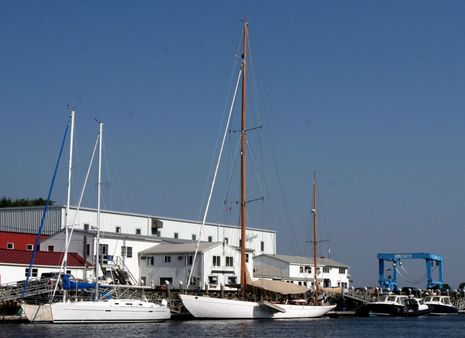
A Camden Harbor 2012 spring bonus has been getting to know that classy 85-foot wooden yawl as she prepared for an attempt at the Northwest Passage. Her name is Nordwind though her mainsail cover and life rings are marked Nordwind 1939, presumably in memory of both her launch year and the Fastnet Race in which she set a record that held for twenty-four years. Some of this history can be found on Nordwind's 2011 Transatlantic Race page along with mention of her recent rounding of Cape Horn. This old boat still gets around! I suspect that her greatest asset for the adventure north is the fact that her professional skipper, Alex Veccia, has already sailed her so many hard miles. But if you look closely in her rigging, you'll see that he will have some new electronic helpers...
I was one of several people who helped Alex figure out what might help with the many forms of floating ice that Nordwind may encounter during her long voyage. For instance, a FLIR contact pointed us to some detail about how well thermal cameras can detect ice (if you download the "application note" you'll learn that there are several reasons why thermal can "see" ice as quite distinct from ice cold water). But it was Wayfarer Marine's electronics guy Mike Gaulin who was wise enough to suggest testing the unstabilized Raymarine T450 combo cam system at a couple of heights before committing to the high mount seen below, which took advantage of an existing lighting bracket...
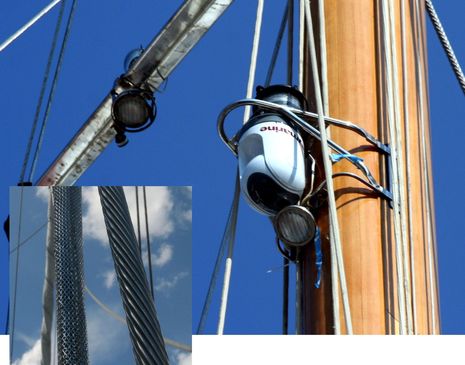
The install I telephoto-ed above wasn't quite done but it turned out slick and it practically disappears in the rig especially as Mike ran the cables in a silver mylar mesh sheathing that nearly matches the shroud their cable-tied to (see inset). It made sense to go with Raymarine's version of the FLIR technology because Nordwind already had a C90W MFD installed and another upgrade Alex (and Nordwind's owner) decided on was to get rid of an old RL70 radar system and replace the mizzen radome with a digital HD model that works with the C90W. It was easy to assure Alex that he'd see significantly better performance from the RD418HD as I've seen both generations on Gizmo (HD goodness just discussed).
You can also see a Vesper Marine Watchmate 850 Class B AIS and a Sea Marshall MoB system in Nordwind's doghouse. And while I wouldn't be surprised if they went to a bigger Raymarine chart/radar/camera display eventually, which might also mean touch control of the camera system, I bet they'll still keep the joystick control built into that portable teak box...
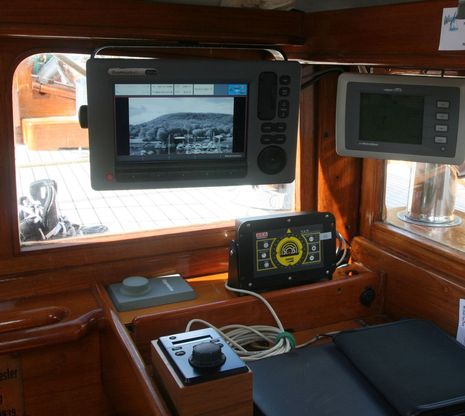
I say that because the camera output is split so that it can also be seen on a monitor that lives on the other side of the doghouse and is used for MaxSea charting and weather. Mike had to use a composite video-to-VGA converter (Impact Acoustics "TV to PC Converter"),
which muddied the camera output a bit, but that screen too could be easily updated (to one that also handled video directly). Getting the mast-mounted cameras and radar in order was the hard part.
Alex promises to report on how well this all works in the Northwest Passage, but I'll also be interested to hear how much they use the cameras in more normal conditions. As you can somewhat see from these pictures it's like having a set of good eyes way up the mast, and with the petite PTZ cams Garmin and others have introduced, it's become a possibility on much smaller boats (and not wickedly expensive if you go with low light only).
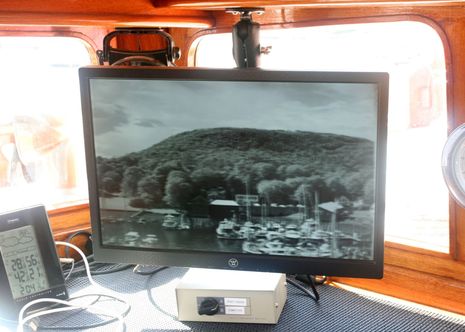
Now, while it has nothing to do with electronics, you too may be interested in seeing more about how this boat was built, not to mention the sort of infernal projects boatyards often face. From the beginning Nordwind had plenty of steel framing hidden away beneath her deeply varnished mahogany interior, and even five waterproof bulkheads, but during one refit a fuel tank got installed that apparently chafed enough somewhere that it developed a leak. Which is why you see the tank as clean and opened up as it is below, and why there's so much ventilation equipment in sight. Yes indeed, a Wayfarer welder fixed that tank from the inside, and hat's off to him. He also built a solid but removable mount for a diesel heater that now resides at the bottom of the main companionway while another is ready to keep the fo'castle cozy...
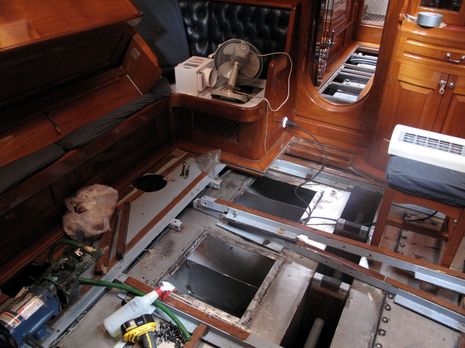
So here's wishing Capt. Veccia and his international crew a safe passage around the top of our continent. I didn't get into it here, but he's already well equipped and skilled with satellite and SSB communications and hopefully will check in from time to time. Good luck, Alex!
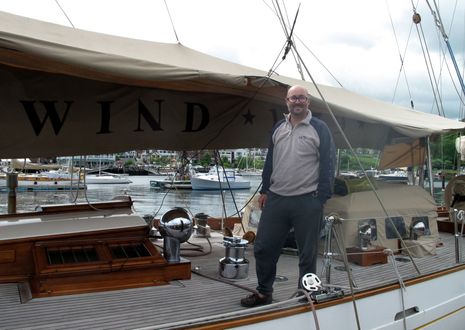

 Share
Share
Hi
Northabout http://www.northabout.com/index.htm transited the NW passage from Labrador, in the west to Nome in Alaska in 2001, in a 49 ft French designed, amateur constructed, Aluminum boat and in 2004/05 completed the North East passage from Alaska to Siberia around the top of Russia to North Cape, Norway.
Equipment by Nordwind standards was sparse, but successful even though the NE passage through Siberia required two seasons to complete.